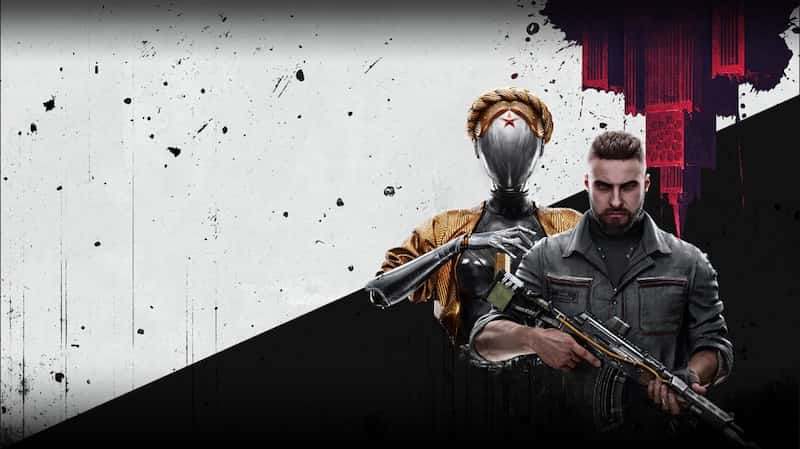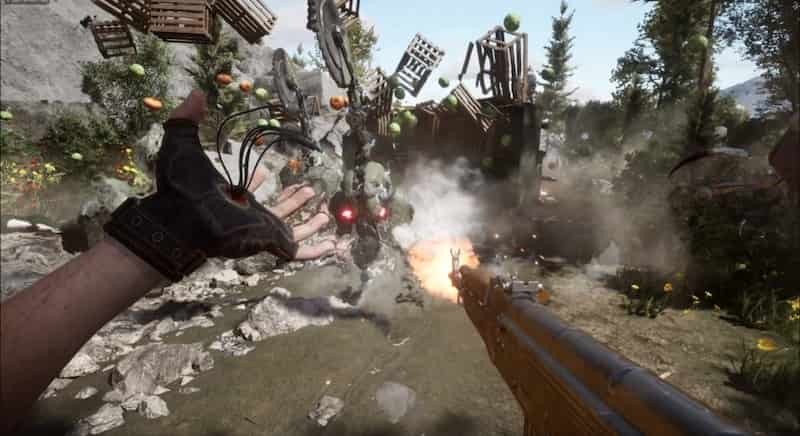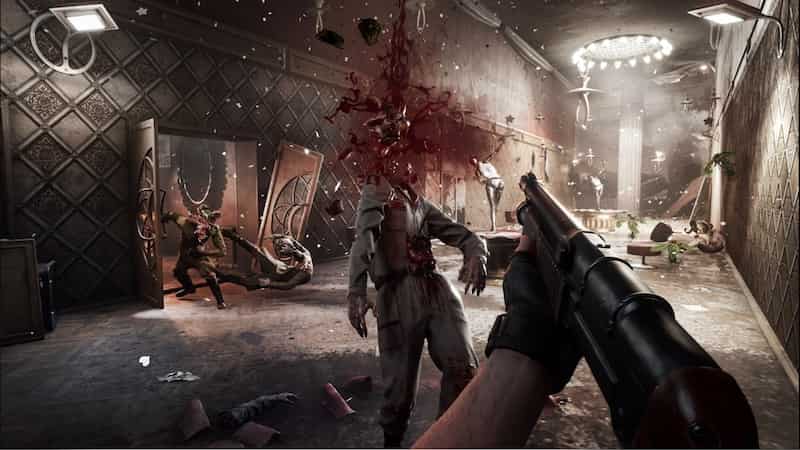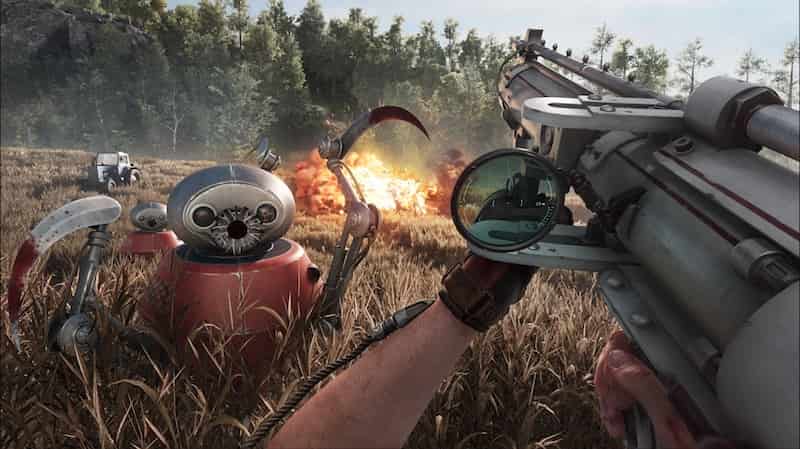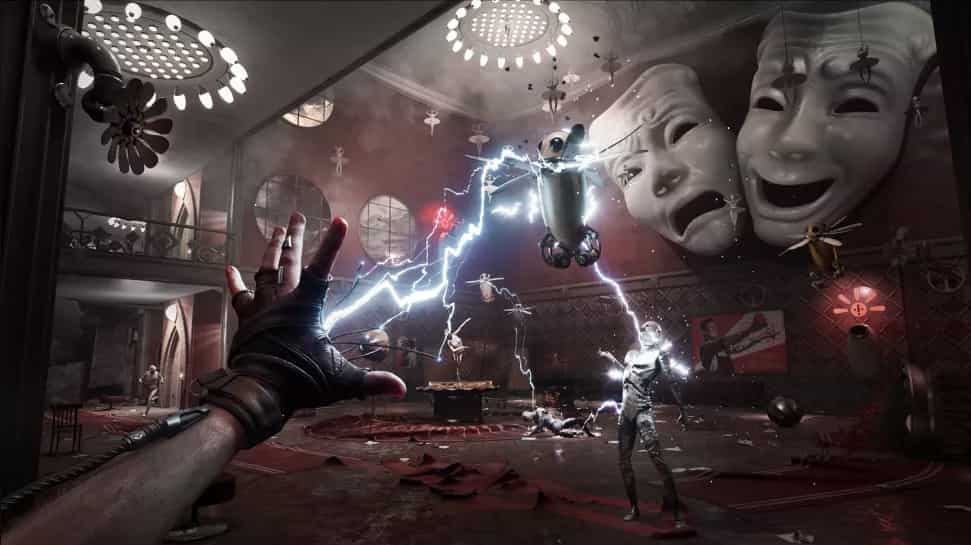Atomic Heart PS5 Review. After much chaos and confusion, Atomic Hearts finally releases. Can Mundfish meet the hype? Find out in PlayStation Universe’s Atomic Hearts PS5 review.
I must admit, even this close to release, I still wasn’t sure exactly what kind of game we would be getting out of Atomic Hearts. From all we’ve seen to date, it brought forward memories of so many iconic franchises including Bioshock, Fallout, and even a bit of Far Cry. The truth is, there’s a bit of all of those in there, and the mixture has the capacity to be somewhat volatile.
Set in an alternate timeline where the Soviet Union greatly prospered following World War II, Atomic Heart’s world is one of retrofuturistic technology, the vision for a ‘perfect world’, and all the hubris and human fallibility to ensure that goes out the window.
Atomic Heart (PS5) Review – Entertaining Soviet Shooter Isn’t Quite the Shock to the System it Could Be
Much has been made about Atomic Hearts’ story before its release. Concerns have been present for the developer’s apparent involvement with the Russian government and that led to fear the game was, among other things, just Soviet pipedream propaganda. It’s here that Mundfish plays to the tune of one of its influences, for better or worse.
In terms of the story, Atomic Heart begins by making this utopian vision of a post-WWII Soviet Union border on parody in much the same way the opening to Bioshock Infinite does (albeit not playing out nearly as clunky and clumsily as that). The protagonist starts the game on a saccharine pedal boat ride along a waterway as a vivid parade takes place. Little hints of what could go wrong crop up early on, and when our protagonist first interacts with one of the machines responsible for this utopia, he’s far from impressed by them. When things go so very wrong, he is quick to blame outside sources rather than the accused source of the problem, who just so happens to be his inspiration and father figure. The ‘oh damn, are the people in charge of this utopia actually bad guys?’ card gets played with little subtlety from the off.
Make no mistake, Atomic Hearts’ ‘utopia gone wrong’ narrative may be blunt in many ways, but it doesn’t appear to be inherently sinister. Yes, it does glorify and make puppy dog eyes for what ‘could have been’ for the Soviet Union, but it’s largely an intentional setup for where the story goes, and the game’s story isn’t exactly subtle enough for you to not see where it’s going early on.
Atomic Heart is not a dumb game, but it’s very much in touch with its stupid, brash inner child. A protagonist who is constantly snarky and grumpy, over-sexualised robots (including a delightfully over-the-top vending machine), and melodramatic conspiracy plots that don’t really pan out. It’s a throwback in a lot of ways, and while that might undermine any message it has, it’s honestly a bit refreshing.
On the technical side of things, there were also concerns. The game’s lengthy development certainly didn’t help to quell fears, and lets be honest, how many times have we seen a promising-looking game with relatively high production values end up falling flat on its face at the finish line? You’d be forgiven for reluctance where Atomic Heart is concerned, but overall, this is a pretty solid game.
The game world is perhaps the most striking part of Atomic Heart. You can feel the attention and care gone into creating this alt-history universe, and nowhere is that felt stronger than in the architecture. Not only is the game world filled with gorgeous retrofuturistic structures, but it also manages to chuck in a bit of rural variety. The game works best when it’s confined to indoor spaces, but the vistas in the more open outdoor sections are genuinely impressive to view. Whatever else can be said about Atomic Heart, there’s no denying how good it can look. Props to a tasty Mick Gordon soundtrack too, which as per usual accentuates the game’s peaks and troughs in action splendidly.
The game in motion is not exactly buttery smooth, but it does manage to run to a surprisingly high standard. It’s why I wish Mundfish didn’t rely on cutscenes from the third person because they’re terribly shot, feel incoherent to the pace and flow of the narrative, and actually make the game look weaker. A bit more confidence in first-person storytelling would have elevated the story being told here.
A small pleasing aside here. I am a big fan of the way Atomic Heart handles picking up loot. You hold down R1 and sweep a room whilst any goodies in the vicinity get vacuumed into your backpack. It’s a pet love about the game and I want to see more of it, and possibly done a bit better.
Beyond that, combat is clearly key to the game’s chances of success, and while it’s nothing revolutionary (taking plenty of cues from Bioshock), it’s a fairly strong part of the overall package. It’s a mixture of melee, ranged, and abilities that you can change up on the fly to handle the different enemies’ strengths and weaknesses. Melee is a lot more useful than it appears to be beyond the opening half hour, and there’s a quite satisfying clang and thunk to whopping robots around their unfeeling faces. Weapons are their own barrel of laughs (when you can get around to crafting them, a strangely high bar for most of them doesn’t help) with a pretty standard zapper alongside a decent shotgun and one of the most satisfying pistols I’ve used in games for quite some time.
But the abilities are the star, and finding your personal groove with them adds plenty to combat variety. You have a basic Shock ability that sends out an electrical charge. This is a tool first and foremost, and is worked into puzzles, and door locks, and in combat, it can briefly stall enemies. It’s a permanent ability that is meant to complement the other chop and change arsenal options. The other abilities are more flexible and optional in their use. These include a pleasing cryo blast that turns robots into icy sculptures in seconds, telekinesis that flings foes into the air in a brief stasis to shoot down, a polymer shield that absorbs a barrage of incoming fire, and more. You can only hold two abilities at a time, so finding what works best for you comes by trial and error.
Juggling all these is a challenge, and there are moments when things fall apart because swapping between weapons and abilities is a touch too slow. Atomic Heart will punish you very quickly, battering your health bar into molecules within seconds if you get caught cold, so it’s not fun when it can feel like the game isn’t up to speed with what your brain is thinking.
For all the variety combat can offer in terms of offensive qualities, it’s a shame that Atomic Heart doesn’t put much effort into stealth options. You can scan the environment in a snazzy LIDAR style to see where enemies and items are, plus gain information on strengths and weaknesses, but sneaking up on them is a lottery that has all the chance of winning a lottery does.
These grumbles are thankfully offset by a bit of gameplay variety. Boss fights shift the experience into a whole new plane of existence (yes, with their own small issues), platforming eradicates any chance of tunnel vision, and large-scale tactile puzzles break up the procession of skirmishes.
I find Atomic Heart to be a highly entertaining popcorn shooter with a bit more between the ears than it might initially appear. It feels like a bit of a miracle that it’s turned out okay given everything that surrounds its existence, and its distinct visual ideas help it stand out from the middling crowd.
Atomic Heart is due out on February 21, 2023 for PS4, PS5, PC, Xbox Series X/S and Xbox One.
Review code kindly provided by publisher.
